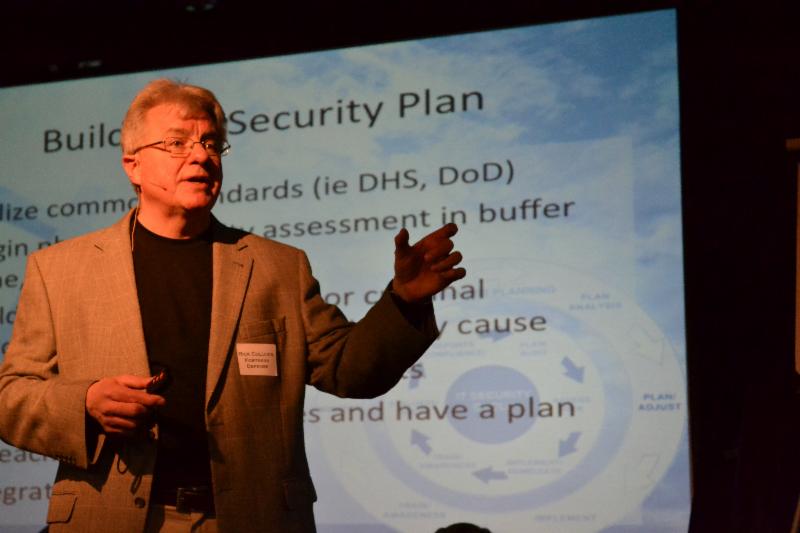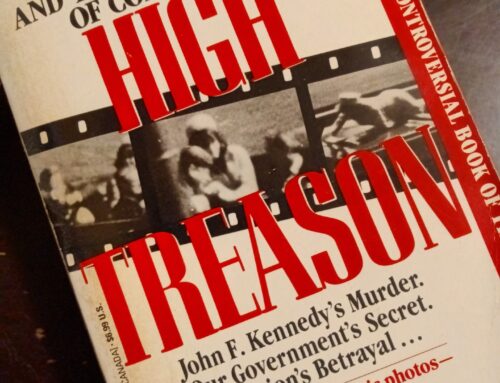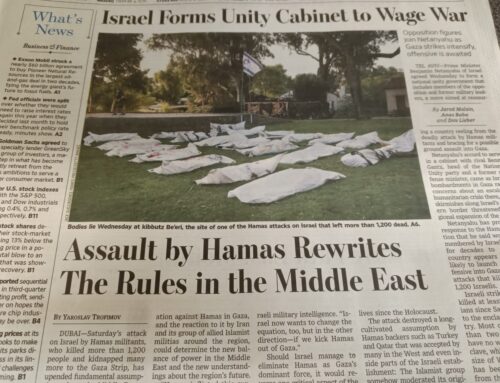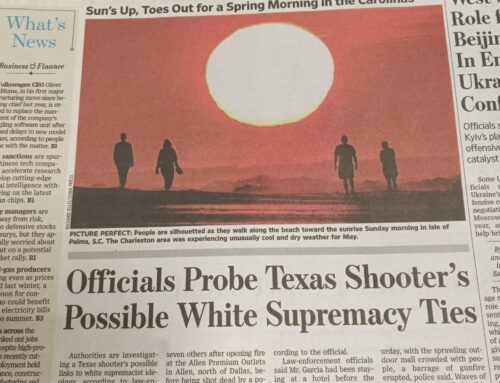First and foremost, my attorney always cautions me to caution you that you should never take something you saw in an article…especially my articles…to constitute advice on how to handle your next crisis. To the contrary, the only thing I can absolutely promise you about your next crisis is that I won’t be with you. Life is a come-as-you-are event and to paraphrase Harrison Ford’s character in Six Days and Seven Nights, “This is an island…if you didn’t bring it with you, you won’t find it here.” For the individual interested in self-protection, or protecting others, this means that when something bad happens it will be up to you to resolve the situation with the training, experience and resources you have at the time. Don’t expect the cavalry to rescue you, and don’t expect the Air Force to drop supplies on your position.
I am a protection guy. And, having been involved in the training and selection of protection personnel for more than 30 years, I have learned that when people show up to class, everyone brings something valuable to the table in the way of their professional and life experiences. As a matter of fact, I learn something new from the students in each class, and if we like a particular technique or learned about a new study or process, rest assured it will be included in the next program.
My students range from the “average Joe and Jane on the street”, looking for basic concealed carry training to police, military or civilian security professionals looking to acquire new skills for their professional tactics tool box. I’ve found that people who attend protection courses have an intense desire to protect others (either professionally or as a family member or concerned employee) and tend to be energetic, involved and ready for action. However, in order to assure that everyone starts from a level playing field we have found that it is important to isolate some fundamental differences between protection training and traditional concealed carry training.
Many of my concealed carry students attend classes as a family. It is not uncommon to have husbands, wives and mature kids equally concerned for their personal safety, and choosing to learn this martial art together, as a team. However, often a single member of the family elects to take the training by themselves with the expression, “It’s up to me at our house…I’ll never get so-and-so to touch a gun.” These folks are interested in learning to protect others.
For this reason, we have begun to incorporate certain techniques into our civilian concealed carry programs, which were historically taught only to specialists who were training to be bodyguards for the rich and famous. While there are certain similarities between the two protection disciplines, such as situational awareness, speed, accuracy, and knowledge of the law, there are also some fundamental differences that must be understood before training can progress.
Traditional experience and ego get in the way
Most of us have mainstream jobs and only think about “protection of others” when accompanying a family member to the mall, sporting event or some other public gathering. Maybe we think of ourselves in this role when dining with our spouse at a popular restaurant. The headlines are unfortunately becoming rife with stories of terrorists and psychotics (as defined by the White House, not a qualified psychologist) barging into public venues and opening fire or waving a machete at the patrons. Sadly, more often now, events have caused us to be more situationally aware of our surroundings, and mistrustful of others.
But, let’s be honest: zero to fifteen hours of concealed carry training (focused on self-protection) may be a prerequisite for that license we carry in our pocket, but it in no way prepares us to defend others competently. We may have been great at taking written exams or hitting bull’s eyes at twenty-one feet, but the concept of protection is going to be something new for us. When we add into this mix the idea that many firearms instructors have egos that are often second only to doctors…well, maybe lawyers too…we can see where professional pride could potentially impede the training process (I’ve heard way too many police firearms instructors tell me “civilians don’t need to learn that kind of stuff”). We need to communicate to our students early in the class, that this is new stuff and may appear contrary to some of the things they’ve been taught for the past ten or twenty years. And besides, some of the best firearms handlers I’ve ever seen, had no police experience. As a matter of fact, in terms if career path, prosthodontists, as an occupational group, seem to be the best shots out there (don’t ask me why…maybe that’s what they do at their conventions).
Moving from direct to oblique assault scenarios
Throughout most of our “carry” careers, we have been trained to respond to an aggressor who is advancing directly on us. But, in protection work we have to re-orient our defensive thinking and posture to an attack that will be launched and directed tangential or obliquely to our position. The weapons strips that we learned in the police academy or in other basic firearms training, now have to be modified to allow for use at a variety of angles, other than frontal. Similarly, blocks and strikes must be practiced from left of, right of and behind an assailant, as this assailant is moving perpendicular to, parallel to or away from us. In some cases, even though we know the person to be armed, we may not see the weapon when we launch our defensive strike.
Stepping “in” to the line of attack instead of “off”
Most martial artists and firearms instructors teach that when we are drawing, reloading, clearing stoppages or just plain fighting, that we need to move frequently and step off our adversary’s line of attack. If we are standing in one place, where our adversary expects us, we are easy prey. However, in protection scenarios, we have to recondition ourselves to step “in” to the line of attack. An attack is being launched at an individual that we want to protect and this means that we must practice getting between the adversary and the target as quickly as possible.
Properly executed from a low-profile position, this can actually work to our advantage, since a target-fixated adversary may not be expecting a counter-attack from his or her flank. However, those same defensive skills that we have practiced through the years must now be modified to be consistent with a variety of attack scenarios.
No back-up; protector closest engages solo
We are raised in traditional law enforcement training to come to the aid of our fellow officers and co-workers. For our police readers out there, picture a spontaneous robbery attempt at a neighborhood convenience store. If 3-4 officers happen to be in the parking lot chatting when another officer confronts the robbery suspect inside (who resists)…what will their response be? Of course – this is why we became cops! We are all going to get a piece of this action.
But again, in protection work we cannot afford to have our attention misdirected by an attack that might only be a diversion, or the initial strike in preparation for a major active shooter situation. Our principal mission is to prevent intentional and unintentional harm to the people we are protecting and that means our focus should be on covering and evacuating ourselves from the source of danger. Thus, when working as a family or group, the person closest to the attack may have to neutralize it by themselves, while everyone else goes a different direction. This has to be a split-second reaction – not something we can take time to discuss when it happens.
Goal is to interrupt, not apprehend
While the “person closest” is responding, we have to remember that we didn’t just throw him or her under the proverbial bus. We don’t have to go five rounds in the cage with our adversary; we just have to interrupt the attack and give the group a few seconds to move from the source of danger. The majority of us won’t have powers of arrest anyway, but if we have done a good job on scouting the places we visit, there should be uniformed security or police personnel close by to assist. If not, in any crowd, there can usually be found well-intentioned spectators who will try to help…leading us to the last category.
We won’t be first
Historically, in active shooter situations, we’ve seen a variety of responses to the initial assault, including the well-supported “run-hide-fight” recommendation from DHS and police departments around the country. If you can get away from danger rather than trying to confront it, then that should always be your first consideration. As a matter of fact, world-famous firearms instructor John Farnam always teaches that the first rule of surviving a gunfight is, “Don’t go.” If you think there’s going to be trouble, you shouldn’t be there.
However, in the protection business, particularly at high-profile public events, we have seen that people will often rush an attacker. Thus, well-meaning, but untrained bystanders will often get to a potential assailant before anyone on a close protection detail, and if we look back at some key assassination attempts, we can see evidence of this:
On the evening of February 15, 1933 Giuseppe Zangara attempted to assassinate FDR at Bayfront Park in Miami. Standing on a folding chair, he pushed a .32 revolver out over the heads of other spectators and as he began to fire, a woman named Lillian Cross grabbed his arm, causing his shots to go off target. She and another spectator, Thomas Armour, were able to restrain Zangara before police and Secret Service agents could get to him.
Oliver Sipple was a US Marine (Viet Nam veteran) who subdued Sara Jane Moore before she could fire a second shot at POTUS Gerald R. Ford as he emerged from the St. Francis Hotel on September 22, 1975. Sipple and Moore were in a crowd of onlookers across from the hotel entrance, about forty feet from the President. Sipple later received a commendation from President Ford for his actions.
Most recently, on March 30, 1981, it was Cleveland native Alfred Antennucci who first saw John Hinckley raise his gun and begin to fire on President Reagan and three others outside of the Washington Hilton. Antenucci struck Hinckley in the head, possibly interrupting his aim and focus, before police and Secret Service agents could apprehend him.
The moral of this story is that, as the person-closest wades into the fray, they should expect to have to negotiate their way around bystanders who may mean well, but haven’t the skills to safely disarm an assailant or neutralize the attack. In an active assault, emotions and adrenaline dump will be high, and while there may only be one weapon, there could be many hands upon it. Or your access to the weapon could be impeded by others fleeing the area in panic; and maybe, this works to your advantage.
While it may seem callous, your obligation is to your family and/or those you’ve chosen to protect. If others are already rushing an armed assailant, you have to consider how it benefits your family if you are killed or disabled in this attack. So, if someone from outside your “circle” is already dealing with the assault, you may have to make the decision to continue out of the area at high speed, and deal with any guilt feelings at a later time.
Train to the Mission
We tell protection personnel to train with their peers as often as possible, using a wide variety of attack scenarios as a guide to develop new, and easily demonstrable techniques. To avoid injuries, teams should work with competent trainers and practice techniques slowly at first – gradually building speed as the techniques become second nature. Training gear should be modified for our purposes, such as grinding off trigger guards and polishing sharp edges on ASP/Rings training guns, so that we don’t spend more time in the emergency room than we do on the mats.
Before shooting techniques are practiced on the range, I recommend that they are first demonstrated by the instructor and then practiced with Airsoft or Simunition, prior to being undertaken with live ammunition. Remember, most protection shooting must be done one-handed, while you’re controlling another human with the other. We have to be fast, good and able to shoot from unusual positions while holding onto and giving understandable instructions to a human who will be in crisis. Even though we all know that if we have to pull a firearm in a protection role, we’ve probably already identified a gap in our situational awareness, it is nevertheless essential that we practice a protection mindset when practicing defensive techniques.
Train early and train often!
——————————————————
Rick Colliver has served as the global security director for two multi-national corporations with operations in 24 time zones, and has managed protection details in Europe, Africa, Asia and the Americas. He is the course developer and lead instructor in the Principal Protection program at the Ohio Peace Officer Training Academy and is an adjunct instructor in protective operations through several police, military and academic organizations. His book, “Principal Protection; Lessons Learned” is used as a supplemental text at some of the top protection schools in the country. He now offers this type of close protection training to high net-worth families and civilian groups across the United States.






Leave A Comment
You must be logged in to post a comment.